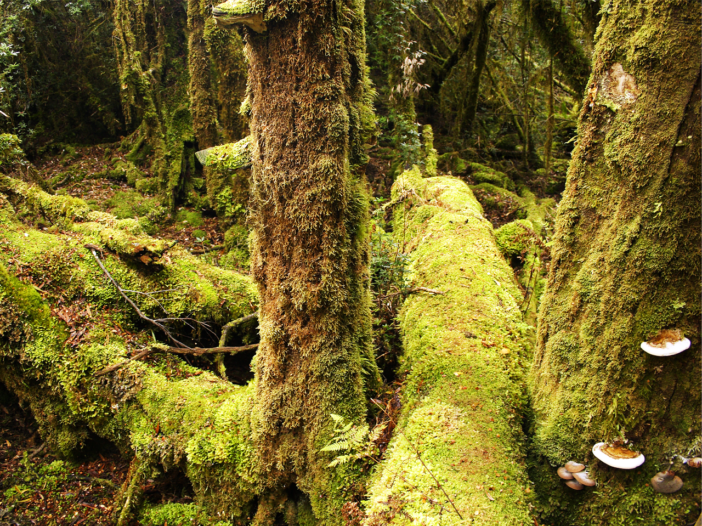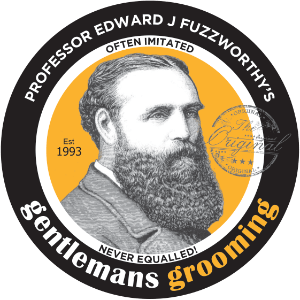
Carpenters and artisans alike love the strong, beautiful wood sourced from these almost Biblically-enduring conifers.
Pub Quiz question: What’s the world’s oldest tree?
If you guessed the mighty sequoia, ancient oak, swamp gum, or something equally majestic, you lose. No cheese tray and bottle of merlot for you!
The winning answer is The Huon Pine (Lagarostrobos franklinii), an unassuming rainforest tree that can look more like a weeping willow than the king of the forest.
And, with very few exceptions, it’s found only in the southwestern corner of Tasmania.
Just How Old are we talking about here?
While individual trees have been dated up-to 3,000+ years (some claim 4000), in the words of our trusted friends at Wikipedia: “A stand of trees in excess of 10,500 years old was recently found in western Tasmania on Mount Read.”
No, the trees aren’t 105 centuries-old, just 30, but the still-living source is! All these trees discovered on Mt. Read are genetically identical male trees that reproduced from a fragment of the ancient parent plant-the stand.
They may live forever, but they’re slow at everything else. Sloth-like in growth and worse than Pandas at reproduction, Huon Pines (which aren’t actually pines, though they are conifers) add about one millimeter of girth a year and only reproduce after 600-800 years.
Sometimes they reach 40 meters in height, but the typical size is only 20-25 meters. Rather than needles, Huon Pine foliage consists of tiny scales that grow close to the stalk; their wee cones (3 mm) produce pollen and seeds.
So, What Makes it So Special?
For this unique tree, most of its beauty is on the inside. The timber Huon Pines produce is a wonder of strength and almost magical powers. Tassie natives have used it as an insect repellent for over a century.
A creamy yellow, the wood is smooth, soft and light, easy to work with, and polish, thanks in part to its innate oiliness.
It’s so durable that even though fallen trees lay on the ground for hundreds of years, their wood doesn’t rot and remains usable.
Huon Pine is renowned for its:
- Beautiful Yellow Colour
- Fine Grain (thanks to its extremely slow rate of growth)
- Waterproof
- Bug Resistant (including moth-resistant)
- Natural Oils that resist rotting
- Unique, pleasant smell, thanks to
- An abundance of Methyl Eugenol (found in many essential oils)
Practical Uses and a Majestic History
Throughout the home, Huon Pine, often in sawdust form is great for:
Absorbing Moisture2 from the air, especially in the bathroom, kitchen, or pantry.
Neutralising odours, replacing unpleasant cooking smells, pet odours, and general mustiness with a natural pine smell.
Repelling pests. It not only drives away moths, but also mites, silverfish, and fleas, which makes it a great addition to the cushioning in your puss or puppy’s bed.
Though supplies are limited today, early Tasmanian shipbuilders relied on Huon timber to create light, waterproof vessels that helped develop the island’s trade routes for timber, apples, and other produce.3 The possibilities of Huon Pine incentivized mother England to ship more convicts to work the island’s shipyards.
Settlers called it ‘green gold,’ and, fortunately, they realized in time that the trees’ incredibly slow growth meant supplies were limited. Conservation efforts began over 100 years ago.
Objects of Beauty
According to the Huonpine.com website, “The felling of green trees stopped completely by the 1970s. But because the timber does not rot and the logs float green, they can be utilised by sawmillers decades after they were first cut.”
So dead and fallen trees continue to provide “salvage” supplies to carpenters, home goods manufacturers, and hair/skincare lines like Professors Fuzzworthy, where we use it as an ingredient in products like our Apple Cider Vinegar Solid Tonic Shampoo Bar and to make durable soap dishes.
Carpenters value it for furniture building and creating beautiful, long-lasting veneers. And crafters love this wonder wood – its high oil content makes it easy to carve and mold without splitting.
Huon is also the material of choice for craftspeople like Tassie-based artisan bladesmith Tim Lowry who often makes the handles of his handmade kitchen and utility knives from the timber.
With its beauty, durability, and innumerable uses, it’s a shame there isn’t more of this wonder wood. So we’ll have to continue enjoying Huon products in small quantities.
To learn more about the historical significance, salvation, and conservation of Tasmania’s Huon Pines, visit Huonpine.com.
1–“Huon Pines Are the Oldest Trees in the World,” Telangana Today, June 14, 2020
2-“7 Reasons To Try Huon Pine in Your Home,” Biome.com, December 17, 2017
3–“What’s So Special About Huon Pine?” Australian Woodwork.com Blog, September 13, 2014












Leave a Reply